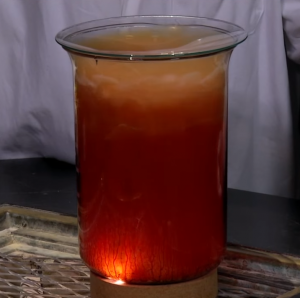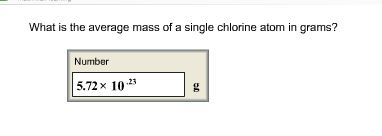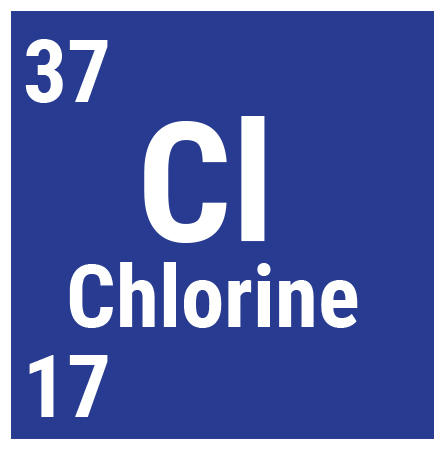A 'weighted average' allows for the fact that there won't be equal amounts of the various isotopes. The example coming up should make that clear.
- Atomic Mass Of Chlorine
- Uses Of Chlorine Gas
- Mass Of Chlorine Atom
- Molecular Mass Of Chlorine Gas
- Mass Of Chlorine 35
Atomic Mass Of Chlorine
Suppose you had 123 typical atoms of boron. 23 of these would be 10B and 100 would be 11B.
The total mass of these would be (23 x 10) + (100 x 11) = 1330
The mass spectrum of chlorine. Chlorine is taken as typical of elements with more than one atom per molecule. We'll look at its mass spectrum to show the sort of problems involved. Chlorine has two isotopes, 35 Cl and 37 Cl, in the approximate ratio of 3 atoms of 35 Cl to 1 atom of 37 Cl. You might suppose that the mass spectrum would look like. Chlorine has two stable isotopes: chlorine – 35 and chorine – 37. The atomic weight of chlorine given on the periodic table is 35.47 u. Different isotopes have different relative abundances,chlorine – 35 has a relative abundance of 75.76%,whereas chlorine – 37 has a relative abundance of 24.24%. Since 1985, relative isotope-ratio mass spectrometry has yielded abundant evidence for variability in the atomic weight of chlorine in both natural and artificial substances, which resulted in the 1999 decision to increase the uncertainty and remove a significant figure from the atomic weight of chlorine, and to introduce the interval notation. About three quarters of all chlorine atoms have 18 neutrons, giving those atoms a mass number of 35. About one quarter of all chlorine atoms have 20 neutrons, giving those atoms a mass number of 37. Were you to simply calculate the arithmetic average of the precise atomic masses, you would get 36.
Uses Of Chlorine Gas
The average mass of these 123 atoms would be 1330 / 123 = 10.8 (to 3 significant figures).
You can get that information by looking at a periodic table (see below) and by knowing how it works. The periodic table is a weirdly shaped table with information about all the elements we've discovered so far. It gives you lots of info but I will.

10.8 is the relative atomic mass of boron.

Mass Of Chlorine Atom
Notice the effect of the 'weighted' average. A simple average of 10 and 11 is, of course, 10.5. Our answer of 10.8 allows for the fact that there are a lot more of the heavier isotope of boron - and so the 'weighted' average ought to be closer to that.
The mass spectrum for zirconium

The number of isotopes
The 5 peaks in the mass spectrum shows that there are 5 isotopes of zirconium - with relative isotopic masses of 90, 91, 92, 94 and 96 on the 12C scale.
The abundance of the isotopes
Molecular Mass Of Chlorine Gas
This time, the relative abundances are given as percentages. Again you can find these relative abundances by measuring the lines on the stick diagram.
Mass Of Chlorine 35
In this case, the 5 isotopes (with their relative percentage abundances) are:
